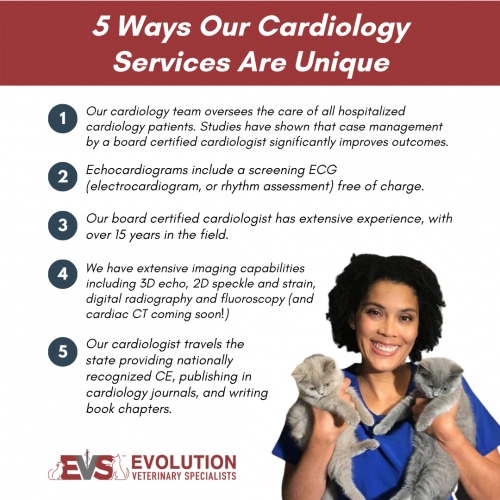The Role of Ultrasound and CT Scan in Modern Veterinary Practices: Insights From Experienced Professionals
In contemporary vet techniques, ultrasound and CT scans substantially enhance analysis capabilities. These imaging methods provide essential insights into animal health, leading treatment choices. Experienced professionals acknowledge the unique advantages of each modality. Ultrasound provides real-time evaluations, while CT checks provide detailed anatomical information. Recognizing their applications and duties raises vital inquiries about their effect on individual end results and the future of vet diagnostics. What insights can be acquired from their combined use?
Understanding Ultrasound in Veterinary Medication
Ultrasound is a crucial analysis tool in vet medication, providing a non-invasive technique to imagine inner structures. This imaging technique uses high-frequency acoustic waves to develop real-time photos of cells and organs, allowing vets to evaluate problems without surgical intervention. Common applications include examining the heart, liver, kidneys, and reproductive organs, in addition to monitoring pregnancies.The procedure is relatively fast and can be carried out in numerous setups, making it an easily accessible alternative for vets. Unlike radiography, ultrasound supplies comprehensive info concerning soft tissues and blood circulation, which is important for precise diagnoses.Veterinary professionals depend on ultrasound to find irregularities such as lumps, cysts, and fluid buildup. Its capacity to assist biopsies and various other procedures better boosts its energy in professional practice. By offering a effective and safe means to take a look at interior makeup, ultrasound has actually become a cornerstone of contemporary vet diagnostics.
The Benefits of CT Scans for Animal Diagnostics
CT checks offer significant benefits in vet diagnostics by giving improved precision in identifying interior problems (CT Scans For Animals). As a non-invasive imaging method, they ensure the security and convenience of pets during evaluations. On top of that, CT checks assist in a complete assessment of interior structures, permitting more effective treatment preparation
Enhanced Diagnostic Accuracy
Improvements in imaging innovation have considerably boosted analysis precision in vet medicine, specifically with the usage of CT scans. These scans supply thorough cross-sectional photos of an animal's interior structures, permitting vets to recognize irregularities with accuracy. The high resolution and three-dimensional abilities of CT imaging promote the discovery of problems such as tumors, fractures, and inner blood loss that may be missed with traditional imaging techniques. Additionally, CT scans can aid in pre-surgical preparation by supplying a comprehensive view of physiological partnerships. This level of information not just enhances the precision of diagnoses however also help in tailoring effective treatment plans. As a result, the integration of CT innovation into vet techniques is changing the landscape of pet healthcare, improving outcomes for patients.
Non-Invasive Imaging Strategy
The introduction of non-invasive imaging techniques has transformed pet diagnostics, with CT scans becoming a prominent tool in veterinary methods. These scans give high-resolution, cross-sectional photos of an animal's inner frameworks, allowing vets to evaluate intricate problems without the demand for intrusive procedures. The benefits of CT scans include their ability to detect lumps, cracks, and internal blood loss with remarkable precision. Furthermore, they assist in the analysis of soft tissues and body organs, enhancing analysis abilities. The rate of CT scanning allows quick decision-making, which is essential in emergency situation scenarios. By lessening anxiety and pain for the pet, CT scans contribute to an extra gentle approach to diagnostics, inevitably enhancing treatment end results and progressing veterinary care.
Comprehensive Internal Assessment
A thorough interior analysis is crucial for precise diagnosis and efficient treatment in vet medication. CT checks deal considerable benefits hereof, providing in-depth cross-sectional photos of a pet's internal structures. This innovative imaging modality enhances visualization of complex anatomical regions, enabling veterinarians to recognize irregularities such as lumps, fractures, and internal blood loss with greater accuracy. In addition, CT scans help with the evaluation of problems that might be challenging to diagnose with traditional methods. The rate and precision of CT imaging additionally add to prompt interventions, boosting individual end results. As vet techniques progressively include CT innovation, the advantages of comprehensive internal evaluations end up being noticeable, reinforcing the importance of this device in modern vet diagnostics.
Contrasting Ultrasound and CT Imaging Techniques
While both ultrasound and CT imaging offer crucial duties in vet diagnostics, each strategy offers distinctive benefits and restrictions that can affect clinical decision-making. Ultrasound is specifically valued for its real-time imaging capabilities, allowing vets to observe dynamic physiological processes. This method is non-invasive, mobile, and does not include ionizing radiation, making it a much safer alternative for both medical professionals and pets. Ultrasound might have restrictions in picturing specific anatomical frameworks or deep tissues.Conversely, CT imaging offers comprehensive cross-sectional sights of the body, permitting for accurate localization of problems. It masters assessing complex body organs and structures, specifically in the thorax and abdominal area. CT scans need sedation or anesthetic in numerous cases and entail exposure to ionizing radiation. Ultimately, the selection in between ultrasound and CT relies on the particular clinical situation, the location of interest, and the necessity of the diagnostic demands.
Case Researches: Successful Diagnoses Via Imaging
Instance studies this hyperlink show the significant improvements in analysis accuracy accomplished via innovative imaging innovations like ultrasound and CT scans in veterinary practices. These improvements not only boost the discovery of different problems however additionally help with reliable and prompt treatment plans. Evaluating particular instances can highlight the transformative influence of these imaging methods on vet medication.
Diagnostic Accuracy Improvements

Imaging Innovation Advancements
As vet imaging modern technology proceeds to evolve, its effect on diagnostic abilities ends up being progressively evident. Recent study highlight the effective application of innovative ultrasound and CT check methods in recognizing intricate problems. A veterinary clinic made use of high-resolution CT scans to identify an uncommon kind of lung cancer cells in a canine, which standard imaging had actually missed out on. In a similar way, an ultrasound exam revealed an abdominal mass in a cat, motivating prompt surgical intervention and a favorable result. These advancements not only enhance analysis accuracy yet additionally allow veterinarians to devise targeted therapy strategies. By leveraging innovative imaging innovations, veterinary professionals are significantly improving individual care, leading to extra reliable administration of numerous wellness conditions in pets.
The Function of Imaging in Emergency Situation Vet Care
Imaging plays an essential duty in emergency situation vet treatment, providing vets with vital details needed to make quick, informed decisions. In urgent circumstances, methods like ultrasound and CT scans make it possible for specialists to quickly analyze an animal's inner structures, identifying essential conditions such as inner bleeding, fractures, or body organ irregularities. These imaging modalities enable real-time evaluations, promoting timely treatments that can be life-saving. Ultrasound is very useful for assessing soft cells injuries and problems like fluid accumulation, while CT scans deal thorough photos of complex anatomical frameworks, crucial for diagnosing injury instances. The rate and precision of these imaging methods enhance the veterinarian's ability to develop efficient therapy plans, guaranteeing the finest feasible end results for their clients. The integration of advanced imaging technologies right into emergency situation veterinary practices is not just advantageous but increasingly necessary, as it enhances diagnostic capacities and boosts general pet care throughout vital moments.

Training and Knowledge in Vet Imaging
Advanced imaging strategies such as ultrasound and CT scans are necessary for effective vet treatment, the successful implementation of these innovations greatly depends on the training and proficiency of vet professionals. Efficient use imaging tools needs complete expertise of anatomy, pathology, and the principles underlying each method. Veterinary specialists must undergo specific training to accurately translate imaging outcomes, which is essential for detecting problems and planning treatment.Certifications and proceeding education in veterinary imaging boost the abilities of specialists, allowing them to stay updated with technological innovations. Partnership in between radiologists and veterinarians typically causes improved diagnostic accuracy, as experts can provide insights into complex cases. In enhancement, practical experience in dealing with imaging devices promotes self-confidence in its application. Inevitably, the top quality of vet imaging services is straight associated to the degree of training and know-how possessed by the professionals utilizing these vital diagnostic devices.
Future Trends in Diagnostic Imaging for Animals
With the rapid advancements in technology, vet analysis imaging is poised for significant evolution in the coming years. Arising fads indicate a change in the direction of more obtainable and mobile imaging methods, such as handheld ultrasound devices, which could enhance area diagnostics. In addition, the combination of expert system is expected to revolutionize photo evaluation, permitting quicker and extra exact interpretations of results.Moreover, improvements in 3D imaging techniques and calculated tomography will certainly supply veterinarians with more detailed views of pet anatomy, leading to better treatment strategies. Virtual reality modern technology may additionally contribute in surgical preparation and education, giving veterinarians a distinct perspective on complicated cases.As telemedicine continues to grow, remote consultations promoted by diagnostic imaging will certainly come to be a lot more common, permitting specialists to assist family doctors in real-time. Overall, these patterns are readied to improve the performance and efficiency of vet treatment, ultimately boosting pet outcomes.
Frequently Asked Inquiries
Exactly How Much Do Ultrasound and CT Checks Price in Vet Centers?
The prices of ultrasound and CT check over here scans in vet clinics usually range from $300 to $1,500, depending upon variables such as location, clinic type, and details procedures needed for the animal's diagnosis and treatment.

Exist Any Kind Of Risks Associated With Ultrasound and CT Checks for Family Pets?
Ultrasound and CT scans usually present very little risks to pet dogs. Prospective issues consist of sedation reactions and exposure to anesthetics. Vets very carefully assess each situation to minimize any kind of threats connected with these analysis procedures
How Much Time Do Ultrasound and CT Treatments Commonly Take?
Ultrasound procedures generally take around 30 minutes to an hour, depending on the intricacy. CT scans, being more in-depth, generally call for 30 minutes to 90 mins, consisting of preparation and recuperation time for the family pet.
Can All Veterinarians Perform Ultrasounds and CT Scans?
Not all vets can carry out ultrasounds and CT scans. Specialized training and qualification are typically required to ensure expertise in these advanced imaging techniques, which might restrict their availability to veterinarians with extra credentials and resources.
What Sorts Of Pets Profit Most From These Imaging Techniques?
Specific pet species, especially pet dogs and pet cats, advantage significantly from ultrasound and CT scans. These imaging strategies boost diagnostic accuracy for conditions like growths, inner injuries, and organ abnormalities, causing better treatment outcomes and client treatment. The high resolution and three-dimensional capacities of CT imaging facilitate the detection of conditions such as tumors, cracks, and inner blood loss that could be missed with conventional imaging techniques. Instance researches highlight the considerable improvements in analysis precision attained with innovative imaging technologies like ultrasound and CT scans in veterinary techniques. Improving analysis precision in vet methods has actually been significantly aided by improvements in imaging modern technologies such as ultrasound and CT scans. Sophisticated imaging methods such as ultrasound and CT scans are necessary for effective veterinary care, the effective implementation of these innovations heavily depends on the training and know-how of vet professionals. Vet professionals must undergo customized training to properly analyze imaging outcomes, which is important for diagnosing problems and planning treatment.Certifications and proceeding education and learning in veterinary imaging boost the skills of professionals, allowing them to remain updated with technical improvements.